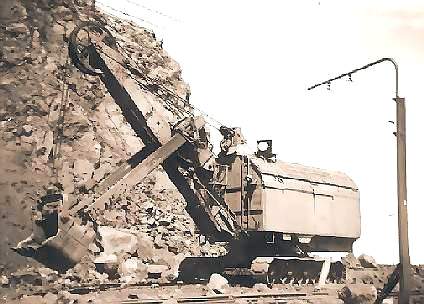 The Iron Monarch Mine
The Iron Monarch Mine 
 The Iron Monarch Mine
The Iron Monarch Mine 
The mine produces haematite ore with one of the richest known iron concentrations in the world - an average of 65% to 70%, compared with a 30% average concentration in Britain's ore, 50-55% in America and 36% in Europe. Often it is necessary to mix the richer ores with less concentrated ones for them to be able to be processed properly.
Originally the ore was loaded by hand, with the help of horses & carts before the introduction of steam shovels, then later on diesel & electric shovels.
 |
There is still an old electric train and shovel standing in the town as one of its landmarks.
 |
Ore is still continuing to be taken from the Iron Knob town mine today, with the haematite being transported by truck to Whyalla, from where most of it is then exported. Mining is now mainly done at the Iron Duke site, 65 km south of Whyalla, as part of Project Magnet, where the raw ore will be transported back to Whyalla by pipeline as a slurry, to reduce the red dust pollution that has been an ongoing problem in suburbs near the steelworks.
 |
 |  |  |  |  |